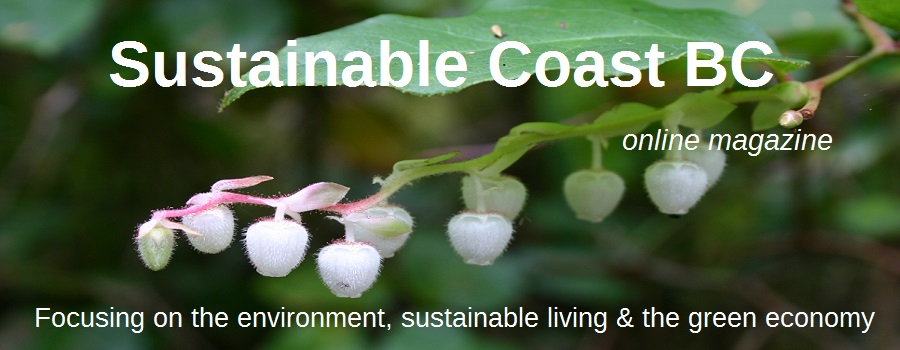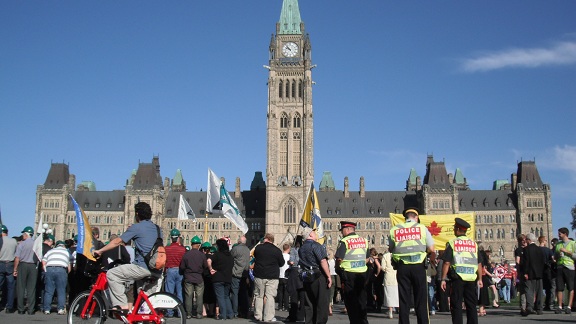News
The protests against the Tar Sands and the proposed pipelines are gaining momentum both in Canada and the United States. Citizens are gathering together in cities in both countries to voice their objections and bring the issue to the media's attention. Two Sunshine Coast citizens, Suzanne Senger and Brad Benson, attended the protest in Ottawa on September 26. Sustainable Coast spoke with them recently about their experience. Be sure to watch the video posted below.
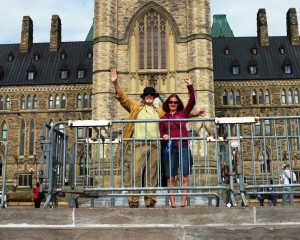
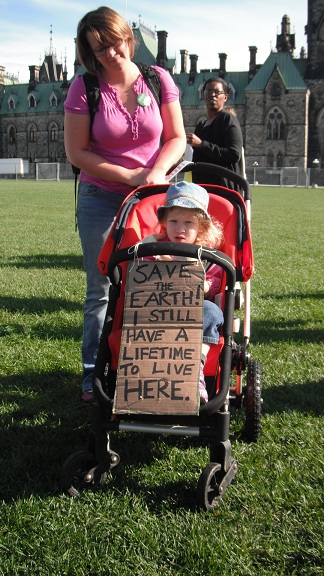
THE PROTEST
SC: What motivated you to participate and go to Ottawa?
SS: In 2009 I attended a slideshow by journalist and author Andrew Nikiforuk. After reading his book "TAR SANDS DIRTY OIL AND THE FUTURE OF A CONTINENT", I realized how absolutely destructive the Tar sands project is on so many levels, not just carbon emissions and environmental destruction. I was struck by the fact that so long as my government continues to cover up the spreading sickness in the communities downstream of this industry and violate indigenous treaty rights, I am no longer – my definition of a Canadian. I realized that if my son is to have a planet on which to rear my grand babies the Canadian government must commit to exploring sustainable energy sources like algae bio-deisel and stop blow torching the fuse on the biggest carbon bomb this planet has ever known, now.
But, the Tar Sands are such a huge project, I did not know what to do or where to begin until the Keystone pipeline reared it’s ugly head. I signed up for the Keystone protest in Washington but ended up not being able to go. I watched with a heavy heart as day after day dozens of people including my heroine Naomi Klein, were arrested on Capitol hill and documents came to light exposing the Canadian government actively lobbying the US government on behalf TransCanada - the company building the pipeline. I started searching around online and found an Ottawa action was already being organized. Where to begin had finally presented itself.
SC: Can you tell us what your feelings were during that walk to the barricade?
SS: I walked alongside the first line of protesters, filming as they approached the police barricade. A huge crowd of maybe 800 people chanted “let them pass” as Native Elders and youth, hand in hand with a nobel laureate, tar sands workers union leader, Maude Barlowe, Greenpeace, Council of Canadians, etc. climbed the barricade and faced police. I was deeply inspired by the immense strength and solidarity of this act. As these amazing people were “cuffed” and taken away, I was filled with gratitude, pride and conviction. I admit I had been very much afraid and worried about the possibility of arrest, police brutality, jail, bail, a criminal record, but all that fear and worry dissolved in the rhythm of the native drums, the clamour of the crowd and the electricity in the air. As I lined up to take my turn to cross the barricade I found great strength in the fact that I recognize a higher authority than a government regime that blatantly wrongs so many and I was filled with a deep sense of calm because I knew I was doing the right thing.
SC: Do you feel you made a difference, was it worthwhile?
SS: The day before I flew to Ottawa, my 14 year old son Raven was really upset and he pleaded with me not to go. We talked about police and laws and crossing the line for something you know is right even if you are afraid of what might happen. I had to go to Ottawa, to send a message to Stephen Harper, to Big Oil and to my son. Two hundred people risking arrest in order to deliver a message to the government is a step forward across the bridge of fear that seperates us from democracy and sane society. This act brought the issue of the Tar Sands to the House of Commons, into the media and into people’s consciousness. When people read these words, it makes a difference. Participating in this action drew me into a network of people who will not relent until this horrific industry is shut down and this connection is a powerful thing. The world changes one step at a time, across the barricade, onto the grass. And so, step by step, this movement is building.
MEETING WITH OUR REPRESENTATIVE IN OTTAWA 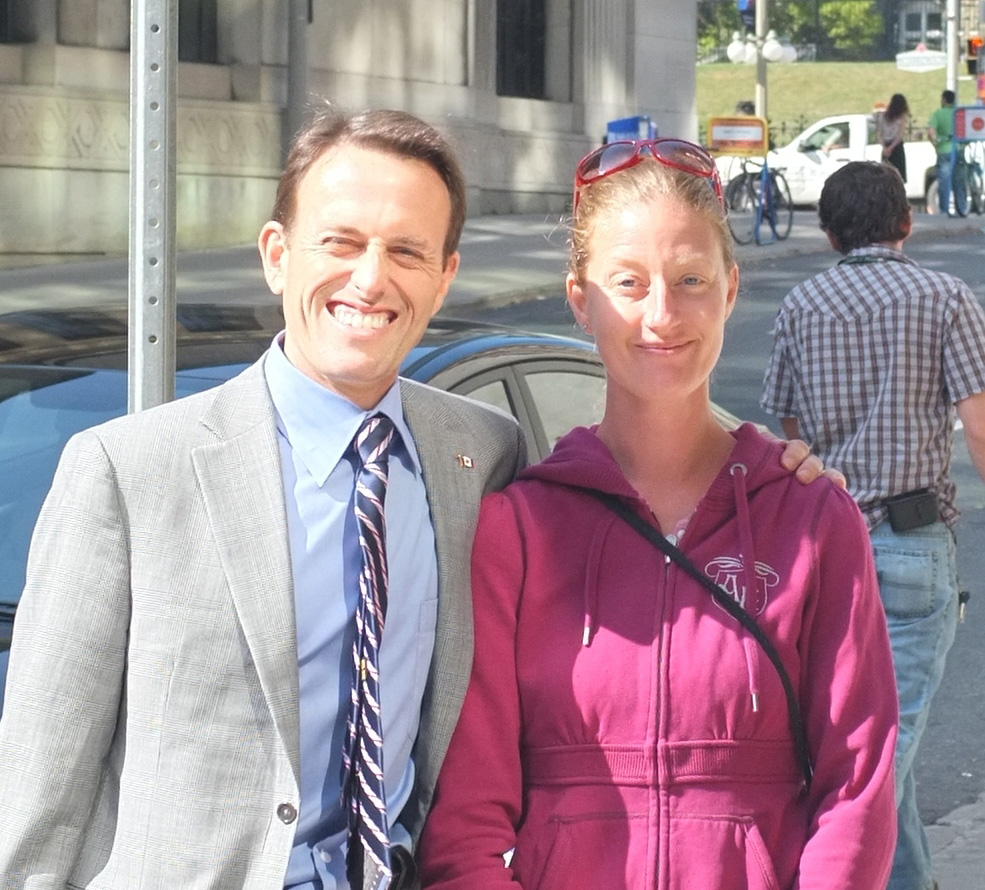
The day after the protest Senger and Benson met with MP John Weston regarding the Tar Sands and a petition they had given him to deliver to Parliment.
SC: Tell us about the meeting with John Weston.
SS: In September 2009 Gibsons joined millions of people planet wide in a day of Climate Action, sending the message to world governments that we want a 350 ppm carbon in the atmosphere world. At that action, 348 people signed a petition asking stephen harper to commit to a 350 planet. Simply put, you can’t have a 350 world with the tar sands in it.
That October as Stephen Harper humiliated Canadians at the Copenhagen Climate Talks, a delegation delivered our 348 petition to our MP John Weston asking him to deliver our message to Ottawa. 2 years later, our message has still not been delivered. So, the day after we risked arrest on Parliament Hill we went to ask our MP why not.
John weston thanked us for coming all the way to Ottawa and explained that the he was unable to table the petition because it was not in the appropriate format. He then committed to helping us reformat it and promised to table the (properly formatted) petition in the House of Commons. We complained to him that as constituents, we spent hundreds of dollars and travelled thousands of kms to deliver a message he was supposed to send meanwhile BIG OIL lobbyists are paid to bend governments ear.
Mr. Weston said that he “knows who his boss is” meaning his constituents. Brad touched on issues of government subsidization through taxation to BIG OIL and Mr. Weston was very defensive. We brought up our sense of shame as Canadians that our government will not to commit to international laws on indigenous rights and the global call for climate justice but we didn’t get much of a response on that.
I asked John how he expected us to trust a government that covers up serious medical concerns in the indigenous communitites downstream for the tar sands and he said that he had no idea this had gone on. He seemed sincere and asked me to send him information so he could look into it. I have since done so.
After about 15 minutes chatting in his office, we walked our MP back “across the street” to Parliament Hill. Strolling across the sidewalk where the police barricade had made our passage “illegal” the day before. I asked John Weston, our Member of parliament who’s campaign promise it is to “shrink the distance between me and Ottawa” how can I get him to take the Tar Sands issue to heart and bring my voice into the House of the people? He told me to keep doing what I am doing and I promised not to stop.
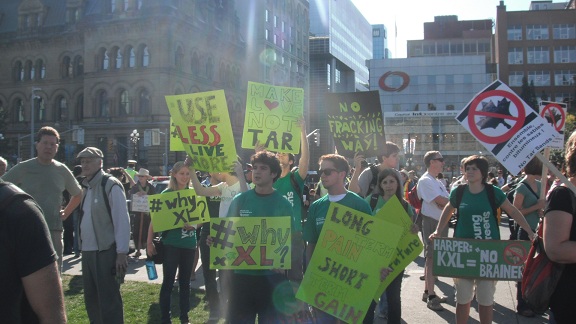
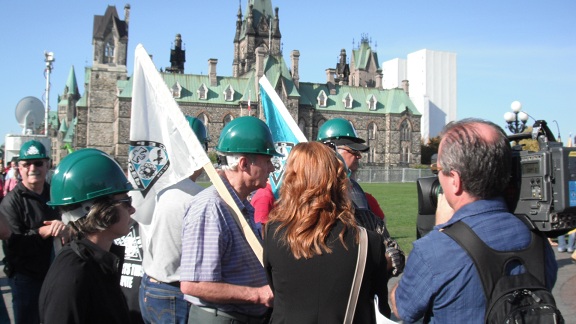
PREPARING FOR THE PROTEST
Before protest day, workshops were held to give the protestors training and briefing on what to expect. The following report is from Brad Benson.
The protest against the Alberta tar sands on Parliament Hill on Sept 26th was very well organized and the action went off without any confrontations. In fact both the protestors and the RCMP were so laid back that everyone seemed to be enjoying the day. It was important that the message we wanted to get across not be sidetracked by any hints of violence, which the media would be sure to focus on. The organizers got high marks in my book for creating a solid working liaison with the police and giving us first class training. The police were obviously reassured that the core group of protesters (200+) had gone through a long and through day of training the day previous.
Following are lists that were posted in the University of Ottawa classrooms where we gathered and fully briefed on what to expect . We got hands on practice crossing the very barricades we would face on Monday, what the arrest process would be like, what to say and not say, what to bring and not bring and contact info if we were arrested , which we were not. We were in one of the later waves that went across and were among those who got off without any charges.
Of note was the information we learned from one protester who had just been arrested in Washington during the White House Keystone pipeline protest . He sat in a crowded holding cell in 33+ degrees temperatures for three days. They were not treated well. I think the organizing action in Ottawa was meant to avoid animosity on the part of the police as well as to make sure our message was clearly heard.
I am proud of everybody that attended this action.
Action Agreements
-
We will be utterly peaceful in all aspects of this action - physical and verbal.
-
We will be dignified in dress and demeanor - these are serious issues, and we want to be taken seriously.
-
I am making the decision to participate in this action myself, and I knowingly and freely assume all risks even if arising from the negligence of others, and assume full responsibility for my participation in this action.
-
We will not yell at or act aggressively to police; we will n to attempt to break police lines.
-
We will not carry weapons or drugs during this action.
Arrest Possibilities
-
Detained and Released
-
Trespass (like a parking ticket)
-
Arrested and Detained
-
Charges Dropped
-
Conditional Discharge
-
Conviction
Arrest Process
-
Taken into custody
-
hand cuffed / zip tied
-
Put in holding area / paddy wagon
-
Questioning may begin immediately
- Chose to remain silent
- Anything you say can be held against you
(even if you are talking to friends) -
Documentation / Processing
- Photos of face and tattoos
- Removal of piercings
- Finger prints -
Held until offered bail
What to bring
-
Identification and lawyer / support contact information
-
Water and snacks
-
Enough money for phone, food and transport
-
Paper & pen for documentation
-
Sunscreen \ sunblock
-
inhaler, insulin or other meds you require with perscriptions
-
Armband
What not to bring
-
Weapons or things that could be construed as weapons
-
Jewelry
-
Drugs or sensitive information
-
Anything you are not comfortable being taken from you
- Less is More
